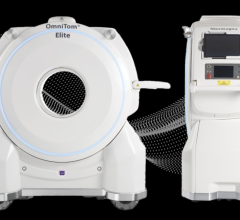
March 20, 2023 — RayzeBio, Inc., a targeted radiopharmaceutical company developing an innovative pipeline against validated solid tumor targets, today announced the completion of enrollment in the Phase 1b portion of the ACTION-1 Phase 1b/3 trial of RYZ101 in patients with SSTR+ gastroenteropancreatic neuroendocrine tumors (GEP-NETs) who have progressed on Lutetium-177 labelled somatostatin analogue therapy. A total of 17 patients were enrolled in a unique dose de-escalation trial. All patients were dosed at the highest recommended dose. The purpose of the Phase 1b clinical trial is to evaluate the safety, tolerability, and pharmacokinetics of RYZ101.
- All 17 patients have crossed the required 8-week dose limiting toxicity (DLT) period and no DLTs were observed
- Patients will be administered up to four doses of RYZ101 at 8-week intervals
- RayzeBio expects to release safety and preliminary efficacy data from the study during the course of the year at upcoming scientific and medical meetings
“We are thankful to the patients that enrolled in this important study. The interest and enthusiasm is evident based on the over enrollment in Phase 1b. We look forward to reporting safety and preliminary efficacy results from the trial later this year and moving into a Phase 3 registrational study. RYZ101 is backed by a strong scientific rationale and has the potential to play a significant role in the treatment of patients with GEP-NETs,” said Susan Moran, M.D., M.S.C.E., Chief Medical Officer of RayzeBio.
About gastroenteropancreatic neuroendocrine tumors
Gastroenteropancreatic neuroendocrine tumors, or GEP-NETs, are rare tumors with an incidence of approximately 18,000 patients annually in the United States. Many GEP-NETs follow an indolent disease course and thus the prevalence of patients with GEP-NETs in the United States is several fold that of the incidence. The prognosis for patients with GEP-NET tumors depends on tumor grade and other histopathologic characteristics. Approximately 80% of GEP-NETs express the somatostatin receptor type 2 (SSTR2). Lutathera is a targeted radiopharmaceutical therapy comprised of a somatostatin analog peptide labeled with the beta-emitting radioisotope Lutetium-177 (Lu177), which received regulatory approval for treatment of adult patients with SSTR+ GEP-NETs in Europe and the United States in 2017 and 2018, respectively. However, most patients who receive Lu177-based somatostatin therapies eventually experience tumor progression and have limited subsequent treatment options.
About RYZ101
RYZ101 is an investigational targeted radiopharmaceutical therapy, designed to deliver a highly potent radioisotope, Actinium-225 (Ac225), to tumors expressing SSTR2. RYZ101 is being evaluated in clinical studies for patients with SSTR+ GEP-NETs who have previously been treated with Lu177-based somatostatin therapies and also in patients with extensive stage small cell lung cancer. Details of the studies can be found at https://clinicaltrials.gov/ct2/show/NCT05477576 and https://clinicaltrials.gov/ct2/show/NCT05595460.
Ac225 for the study was provided by multiple sources including the U.S. Department of Energy Isotope Program.
For more information: www.rayzebio.com
Related Radioisotope Content:
Update on HFR Reactor Outage – Medical Isotope Supply Returning to Normal
Update on Unplanned Outage of the HFR Reactor
SNMMI Issues Alert That HFR Outage Will Impact Isotope Supply
How Nuclear Fusion is Revolutionizing Medical Isotope Production
FDA Approves Additional Molybdenum-99 (Mo-99) Filling Lines at NorthStar Medical Radioisotopes
Medical Isotope Industry Opposes Export of Highly Enriched Uranium for IRE
IBA and NorthStar Medical Radioisotopes Expand Collaboration to Enable Global Availability of Tc-99m


 November 12, 2025
November 12, 2025 









